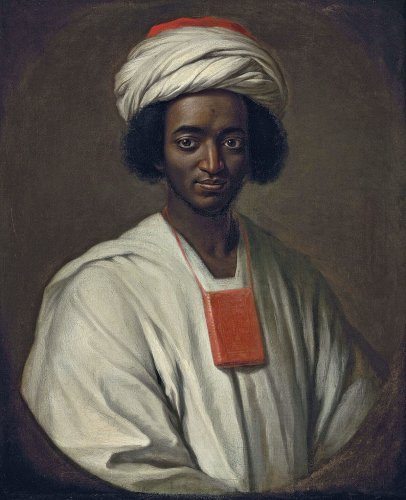Senegalese-born Ayuba Suleiman Diallo is among the few who not only paved a new path for himself during the slave trade period but also ushered in a new era of how slaves and Africans in general, were viewed and treated.
Yes, the horrors of slavery and slave trade are well documented and so too are the efforts made by many to eradicate the inhumane practice, but little is known about the lives of the victims. Over the years, revelations are brought to light about black slaves who distinguished themselves and changed their already altered destiny.
His intellect was crafted in a 1733 oil portrait of him painted by William Hoare, a renowned English portraitist, painter and printmaker, which earned him the title; “The Fortunate Slave”. But how fortunate could a slave be?
Scanning through archives on slave trade, one can easily identify a slave in a portrait, not necessarily because of his/her skin color or dressing but because of how slaves were painted. At a time known for its extreme racial prejudices, Ayuba Suleiman, a victim of the trans-Atlantic slave trade is now recorded in history as the first black slave whose portrait depicted slaves/African as human.
Before then, all previous paintings or pictorial representation of slaves (and people of African descent) were painted in the 18th Century to make them look evil, dangerous and uncivilized.

They were always shown in racist and demeaning ways. Exaggerated facial features often left them looking as scary and inhumane creatures, until Ayuba Suleiman changed the narrative.

Born in 1701 in Senegal into a Muslim family, Ayuba Suleiman Diallo is said to have been gifted with knowledge right from conception. The young Muslim scholar, who many believe engaged in slave trading with his father, was himself captured by slave traders who shaved his beard and shipped him off to Annapolis, Maryland in 1731.
How his intellectual capacity saved him
After he was purchased and put to work by a family that owned a tobacco plantation, he would later escape due to the perilous and vicious working conditions. But as was the case with most runaway slaves, he was caught and jailed.
While in prison, as history holds it, he met an English lawyer, Thomas Bluett who was so impressed by his piety, literacy, intelligence, and adherence to faith.
Bluett wrote about Diallo in his book ‘Some memoirs of the Life of Job’: “his memory was extraordinary; for when he was fifteen years old, he could say the whole Alcoran [Quran] by heart… On all Occasions, he discovered a solid judgment, a ready Memory, and a clear Head. And, notwithstanding the Prejudices which it was natural for him to have in favor of his own religious Principles, it was very observable with how much Temper and Impartiality he would reason in Conversation…”
Diallo wrote a letter and tried to get it to his father in Africa. This letter eventually landed in the hands of James Edward Oglethorpe, a British soldier who was the founder of the Georgia colony. Because the letter was written in Arabic, James had the letter translated at Oxford to better make meaning of its content.
James is said to have been touched by the struggles presented in the letter that he paid money to purchase Diallo’s freedom and bring him to England.
Upon his arrival in England in 1733, Diallo was greeted and treated as equals to the white English people. His was included in a circle of elite white men and he would talk to them casually (which was uncommon for black people to do so at the time), engaging them in theological debates with Christian priests and Bishops, people were impressed with his intelligence, monotheistic beliefs, and piety.
When news of his intellect spread far and wide, many marveled and wanted to meet him. William Hoare was one of such. He approached Diallo to paint his now famous portrait.
The painting not only represented Diallo’s facial and body builds, but it also depicted him on the same level as whites. In it, he sits in his Muslim traditional garment with a necklace, believed to contain one of the three Qurans he wrote from memory while in captivity.

The portrait was the first of a freed slave in the history of British art, and arguably, the first painting of an African man depicted as an equal being, according to Dr. Lucy Peltz.
In 1734, as Diallo returned to Africa where he later died in 1773, he had changed the narrative and proven to the world that slaves could be smart and intelligent and above all, human.
The oil portrait of Diallo is reported to belong to the Orientalist Museum in Doha Qatar.










